SchedulerX supports cross-application job orchestration. You can use a workflow to orchestrate jobs within a single application or across multiple applications that share the same execution logic.
Create a workflow
Log on to the SchedulerX console.
In the top navigation bar, select a region.
In the navigation pane on the left, click Workflows.
On the Workflows page, select the target namespace, and then click Create Workflow.
In the Create Workflow panel, set parameters such as Name, Description, Application ID, and Time Type, and then click OK.
NoteSchedulerX workflows support job scheduling only through cron expressions.

In the Advanced Configuration section, set Time Zone, Calendar, and Task Concurrency.
Create a job
On the Workflows page, find the workflow that you created and click Edit to open the Workflow Details page.
Click Create Task. In the Create Task panel, configure the parameters. The job is then added to the workflow. You can also view the job on the Jobs page.
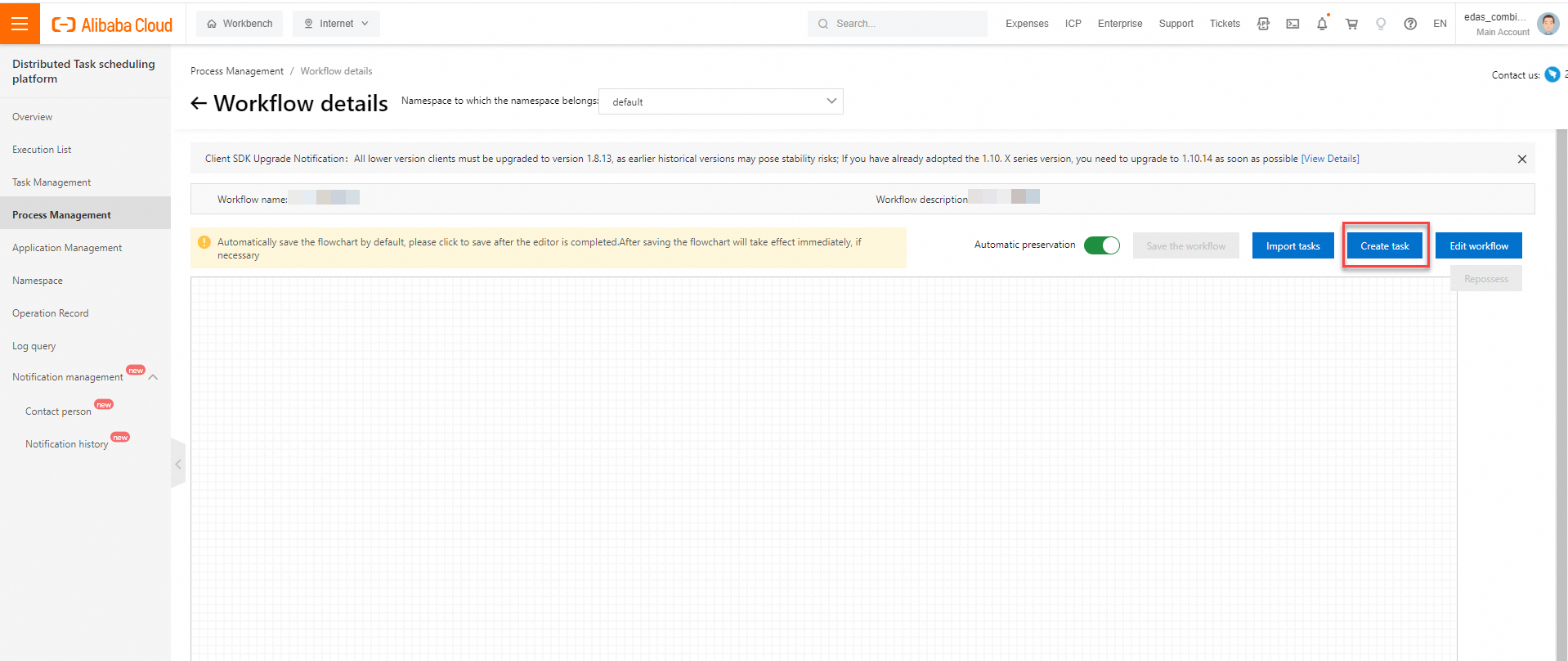
Import a job
On the Workflows page, find the workflow that you created and click Edit to open the Workflow Details page.
On the Workflow Details page, click Import Tasks. In the Application drop-down list, select an existing application. From the job list that appears, find the job that you want to import and click Import in the Operation column. The application to which the current workflow belongs is selected by default.
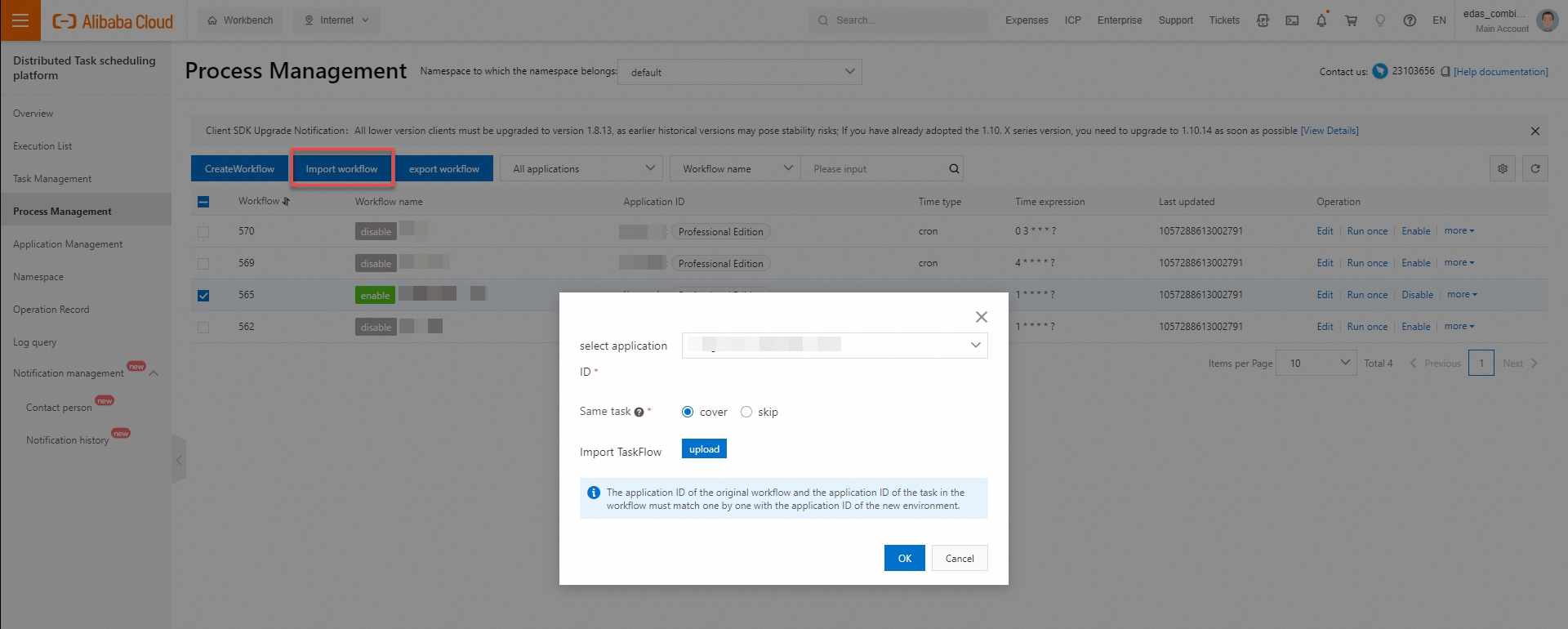
Orchestrate jobs
Add dependencies
You can drag and drop lines to add dependencies.
Example 1: Job 619 is the upstream job of Job 620. After Job 619 is executed, Job 620 starts.

Example 2: After Job 101 is executed, Job 102 and Job 103 start to run at the same time. Job 107 starts to run only after Job 104, Job 105, and Job 106 are successfully executed.

Delete dependencies
You can choose from two methods:
Click a line in the workflow chart and press the DELETE key.
Right-click a line in the workflow chart and click Remove.
Edit or delete a job
Right-click a node in the workflow chart and click Edit or Remove.
Publish a workflow
After you create a workflow, create or edit jobs on the workflow details page, and then click Publish. This enables the workflow and starts the scheduling. If you do not want to enable the workflow immediately, you can click Run Once on the Workflows page to test the workflow before you manually enable it.
Manage workflows
View a workflow instance graph
On the Workflows page, find the workflow that you want to manage and choose More > History in the Operation column to view its execution history.

In the Process Instance Records panel, click the ID in the Instance ID/Process Instance Diagram column to view the running status of all nodes in the workflow.
Stop
On the Workflows page, find the workflow that you want to manage and choose More > History in the Operation column.
In the Process Instance Records panel, click Stop. All running nodes in the workflow are stopped, and the workflow status changes to Failed.

Rerun a workflow
Rerun a workflow
You can rerun a workflow that failed.
On the Workflows page, find the workflow that you want to manage and choose More > History in the Operation column.
In the Process Instance Records panel, choose More > Rerun. All failed nodes in the workflow are rerun, and the workflow status changes to Running.

Rerun a node
On the Workflows page, find the workflow that you want to manage and choose More > History in the Operation column.
In the Process Instance Records panel, click Details to open the workflow instance details view.
Right-click the target node and select an option as needed:
Rerun Self And Descendants: Reruns the node itself and all its descendant nodes.
Rerun Self: Reruns only the node itself. Descendant nodes are not rerun.
In the confirmation dialog box that appears, click OK. The related nodes in the workflow are rerun.
Pause a workflow
You can pause a workflow that is in the Running state.
On the Workflows page, find the workflow that you want to manage and choose More > History in the Operation column.
In the Process Instance Records panel, click Pause. The system waits for the running nodes to complete their execution. Subsequent nodes are not executed, and the workflow status changes to Paused.

Resume a paused workflow
You can resume a workflow that is in the Paused state.
On the Workflows page, find the workflow that you want to manage and choose More > History in the Operation column.
In the Process Instance Records panel, click Resume to resume the execution of downstream nodes.

Skip
In a workflow, if a job has not started running and you decide not to run it, you can skip the job. The workflow then automatically proceeds to the next job.
On the Workflows page, find the workflow that you want to manage and choose More > History in the Operation column to view its execution history.
In the Process Instance Records panel, click the ID in the Instance ID/Process Instance Diagram column. On The Workflow Instance Details page, select the job and then click Skip.
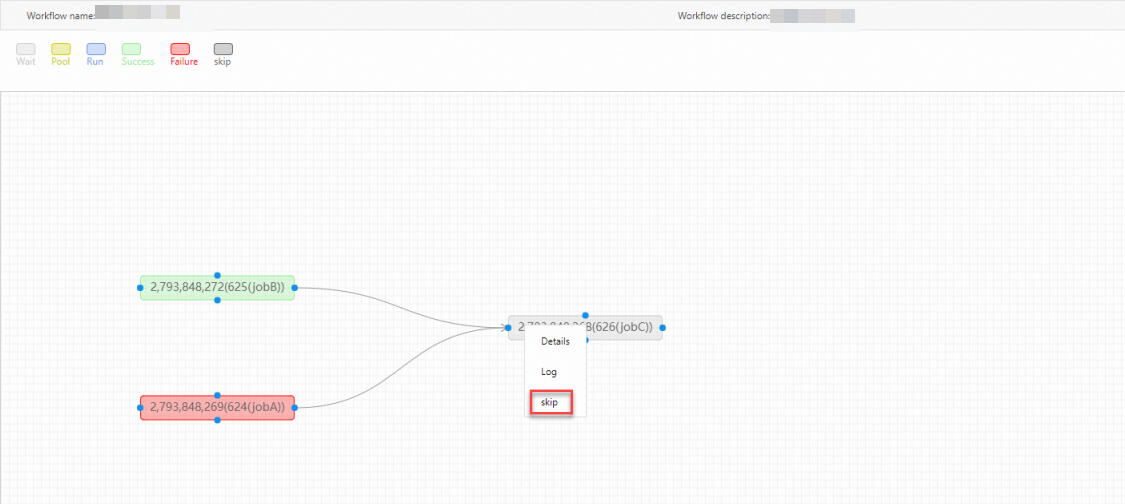
Cancel a skip
For a skipped job, you can cancel the skip and resume its execution before its downstream jobs start to run.
On the Workflows page, find the workflow that you want to manage and choose More > History in the Operation column to view its execution history.
In the Process Instance Records panel, click the ID in the Instance ID/Process Instance Diagram column. On The Workflow Instance Details page, select the skipped job and then click Cancel Skip.
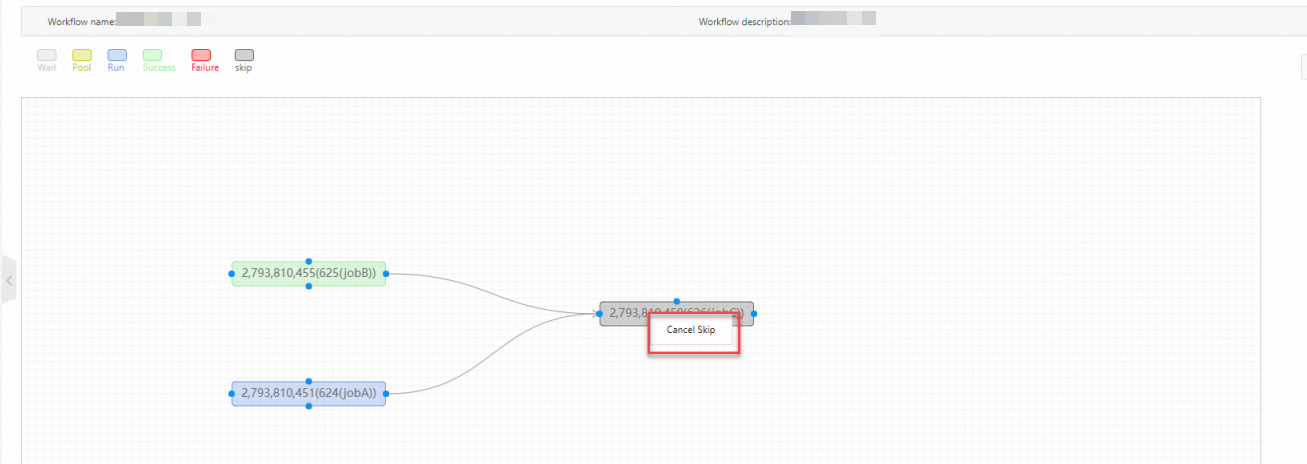
Import and export workflows
To sync workflows across regions or namespaces, you must manually import or export them.
Export a workflow
On the Workflows page, select an application from the All Applications drop-down list, and then select the checkboxes for the workflows that you want to export. Then, click Export Workflow. If you do not select any workflows, all workflows of the selected application are exported.
In the dialog box that appears, select an application ID, confirm the workflow information, and then click OK.

Import a workflow
On the Workflows page, click Import Workflow, upload the workflow file, and then click OK.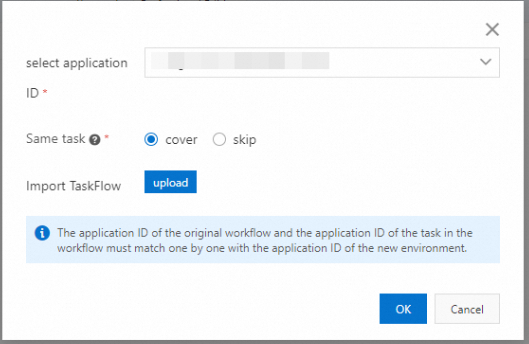
You must import the jobs that belong to a workflow before you can import the workflow. The application ID of the imported workflow must be the same as the application ID of the exported workflow. For more information, see Import or export jobs.